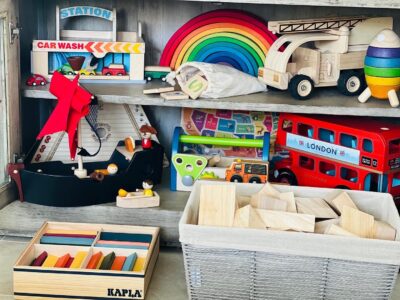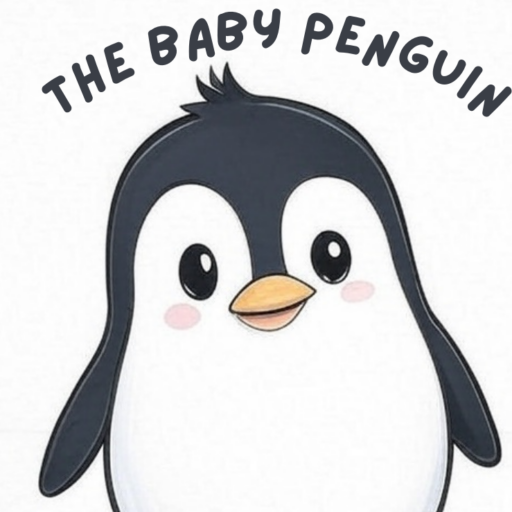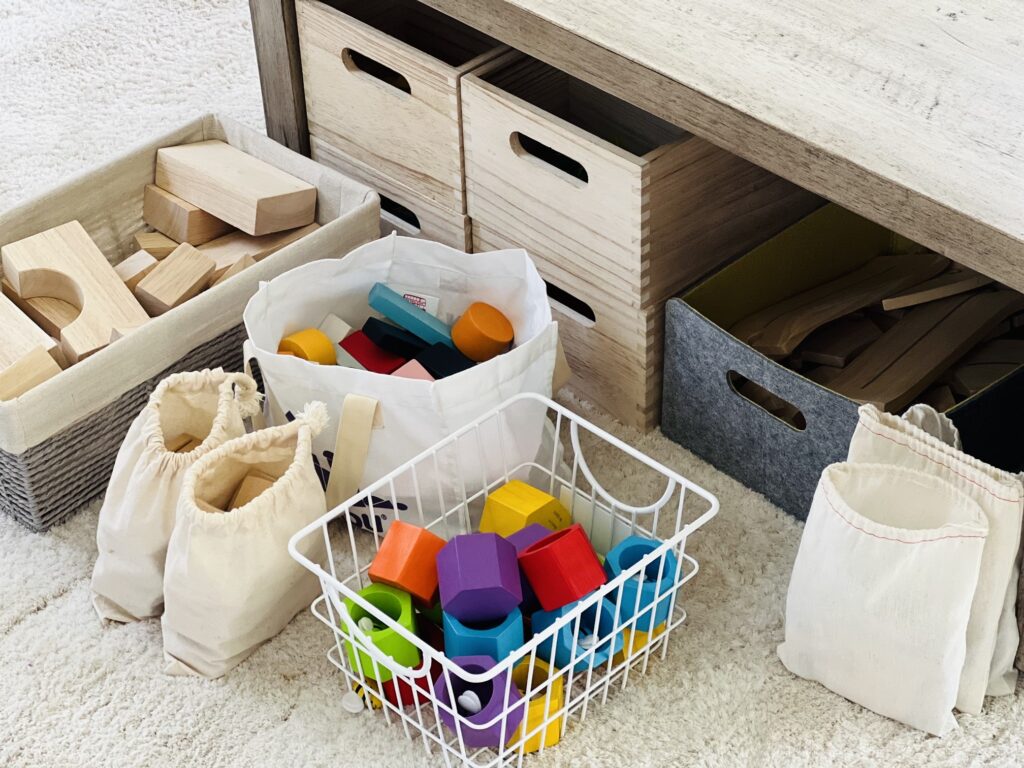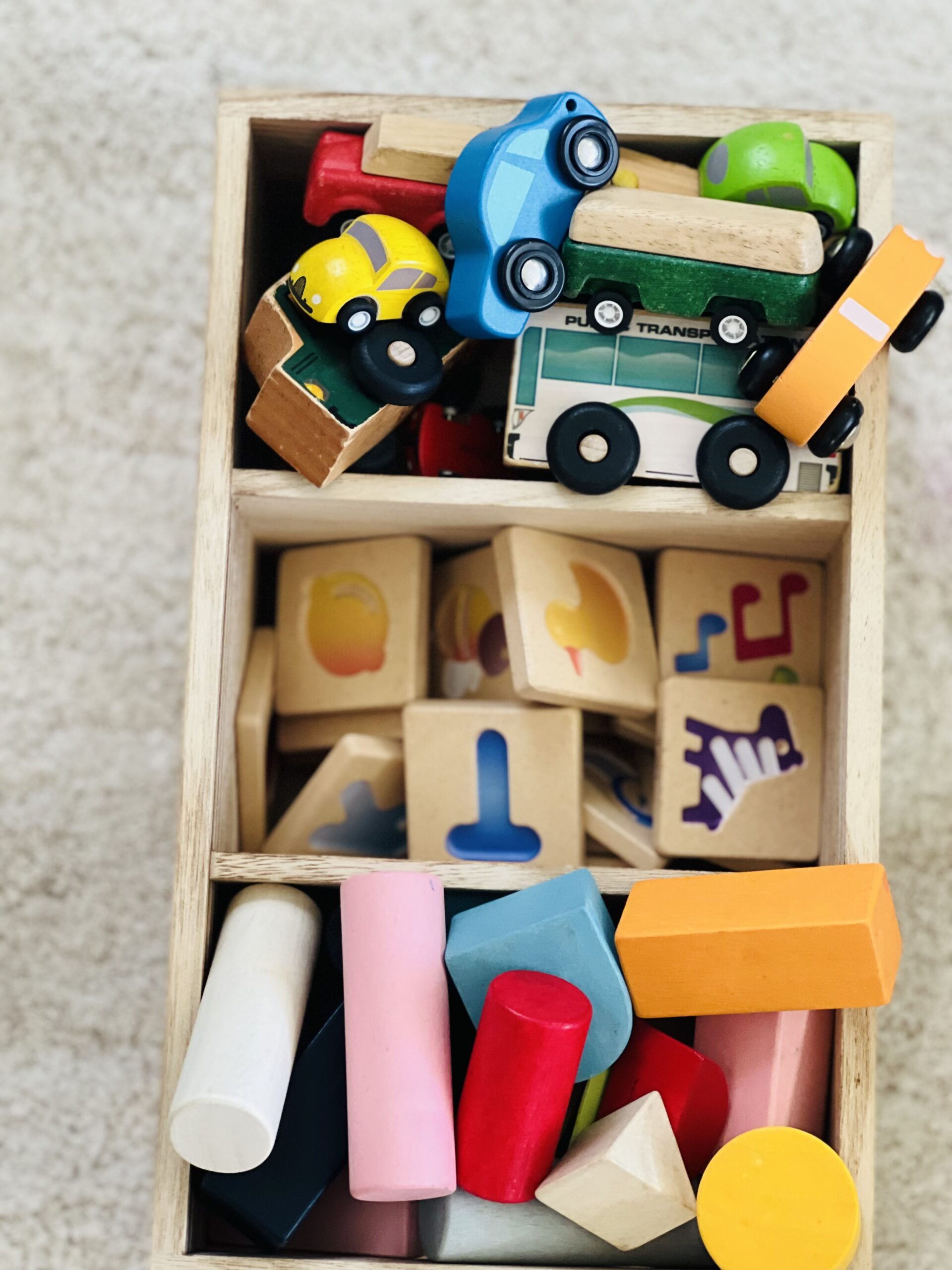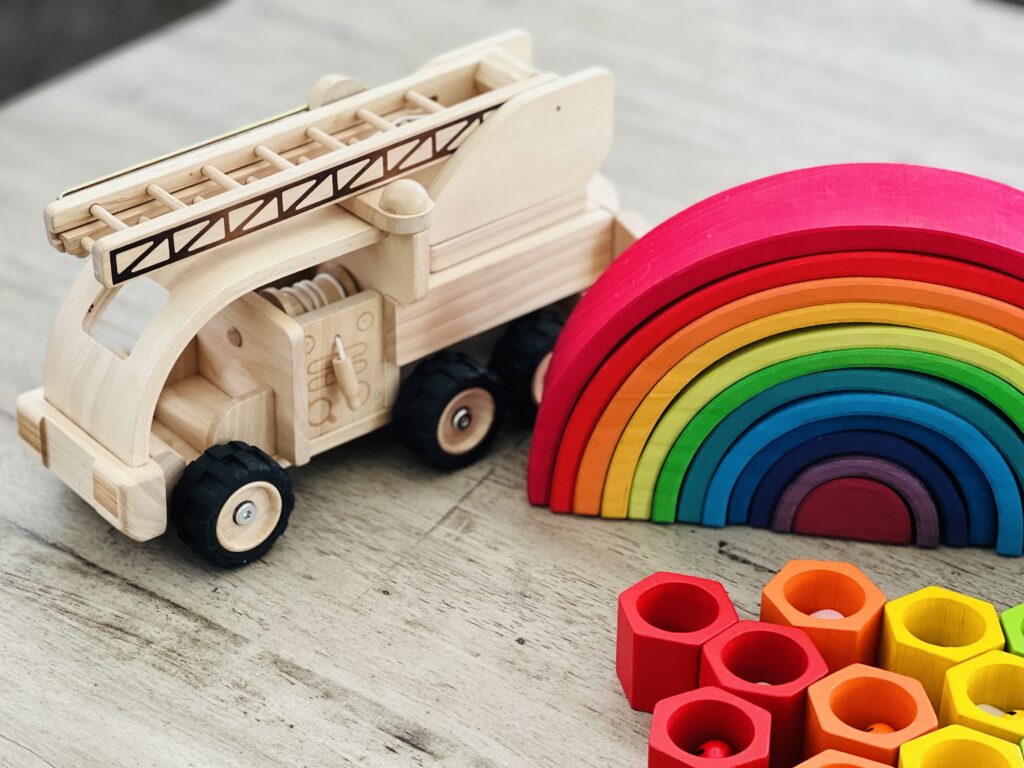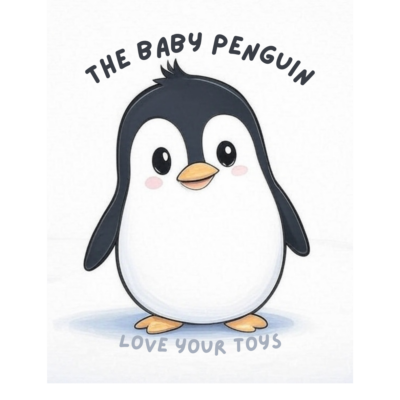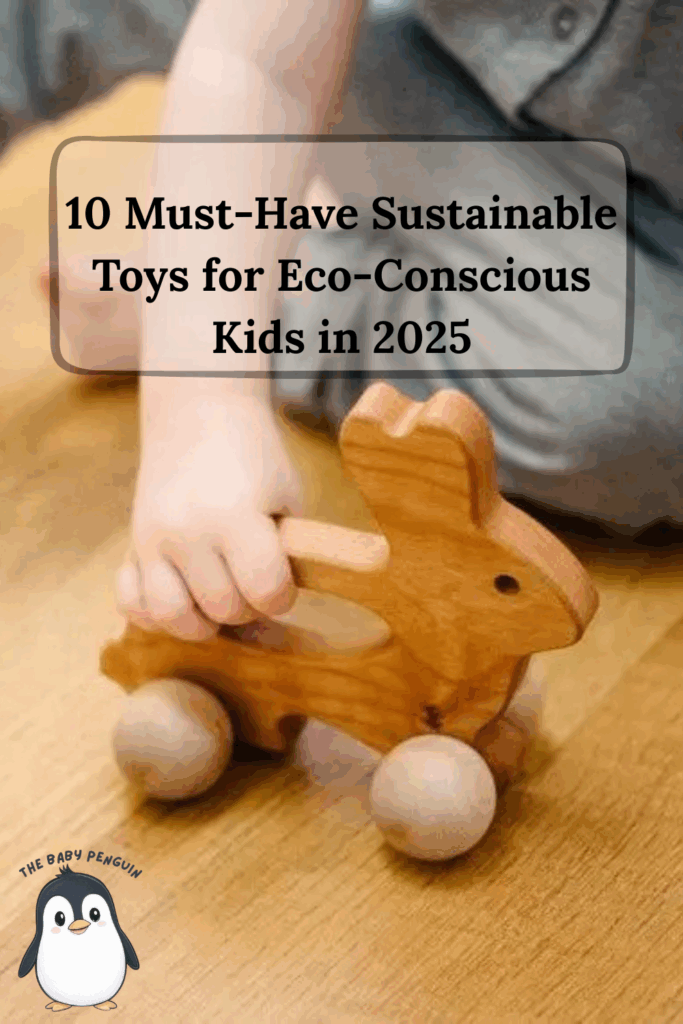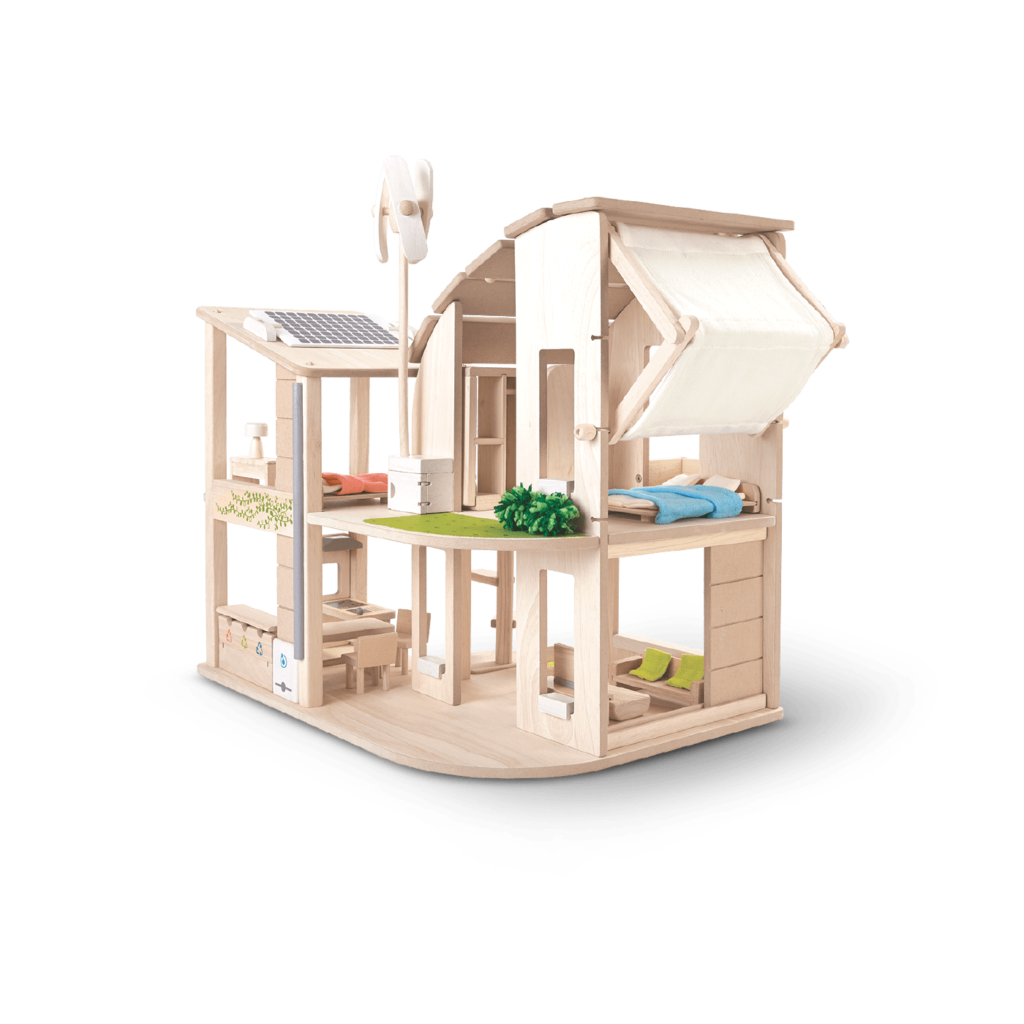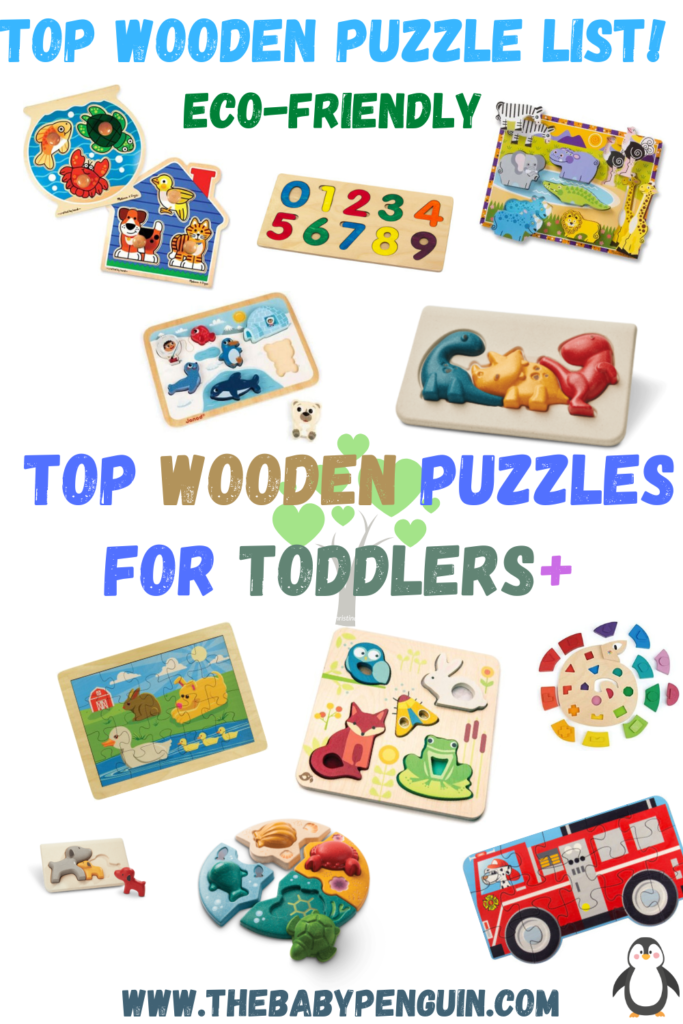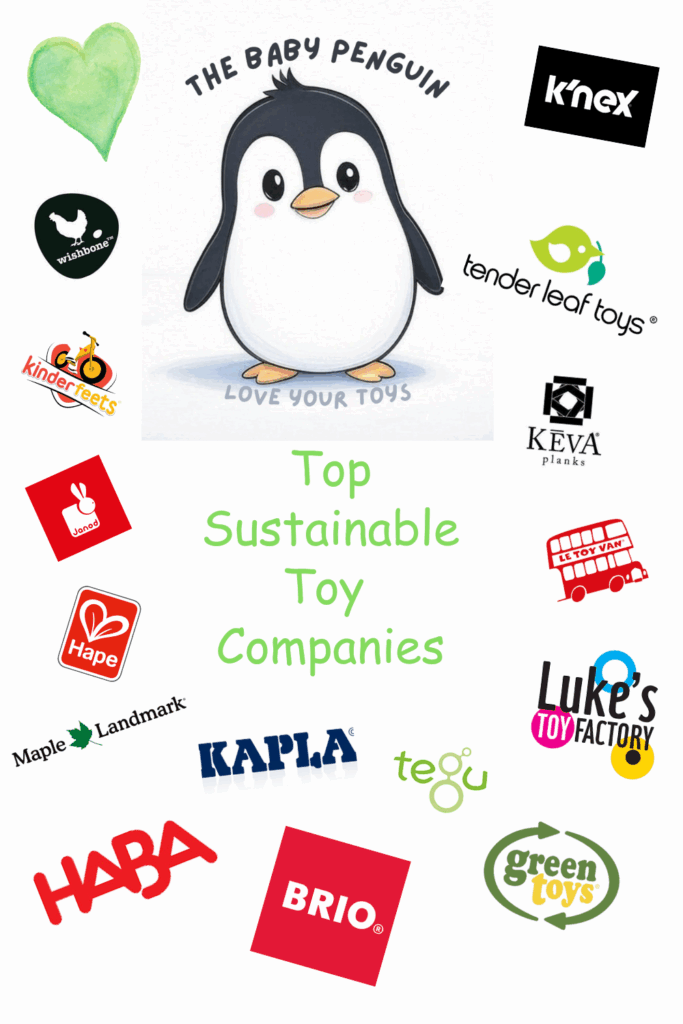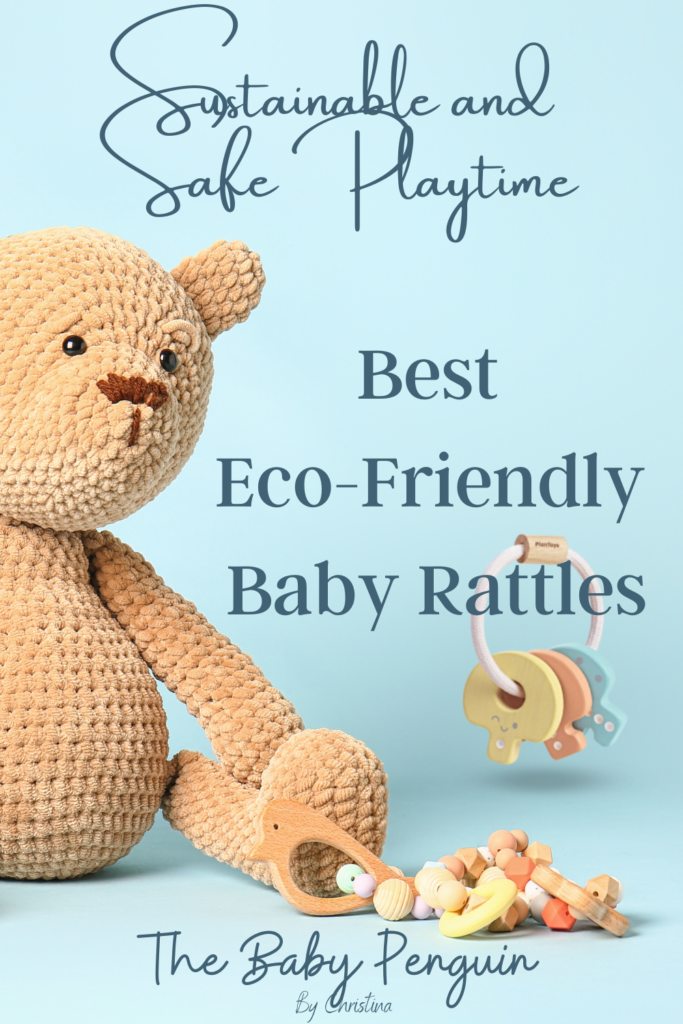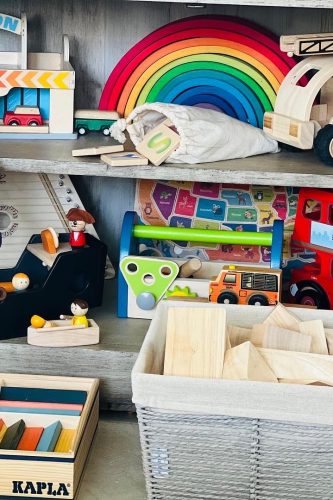Table of Contents
ToggleWhat is a Toy Rotation? | Create in 3 Simple Steps!
Is this some new trend that modern parents are doing? Not exactly! Back in the ’70s and ’80s, my mom was a rotation master. My older siblings and I did not even know this was occurring when we were small. My mom chose to “rotate” toys more out of necessity because we didn’t have a lot of toys and we became bored. She said it was like magic because each time she brought out a toy that had been put away for some time, we would play like it was brand new.
This in return probably gave her a moment’s peace or the chance to get a chore done. She once told me that if she just let us have access to all the toys all the time, we wouldn’t play well or at all. Fast forward to the current day and most kids these days have way more toys than their parents had.
So what is a toy rotation for your child?
A toy rotation is a clever way to keep all your older toys fresh. One simple strategy is to “toy rotate,” which in essence means to only have a certain number of toys out at a time placing the rest in “home storage.” These stored toys will then be rotated with the current toys that are out, for example, every 2 weeks. Toys can be stored into categories so that only 1 of each type of toy is brought out at a time. This is very flexible for the parent to decide.
So why is your child still bored when they have so many toys?
There are a few answers to this question. First, They have too many out at once and cannot concentrate or intently play with one toy for long. Second, they are bored seeing the same toys daily with only new ones coming in for birthdays or holidays. Third, they don’t have the right type of toys that stimulate development, creativity, and concentration. See my post on “3 Questions to ask when purchasing a toy.”
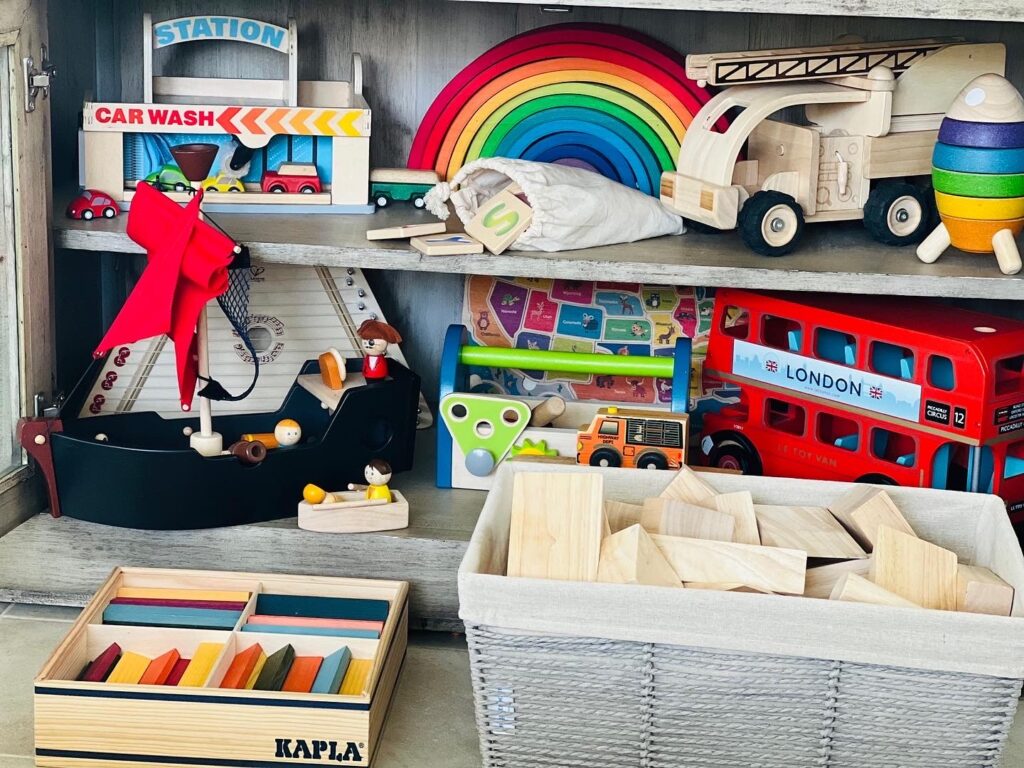
3 Easy Steps to Create a Toy Rotation in your Home
(See my disclaimer here, when you start to follow these steps, you might get sidetracked to declutter and minimize your child’s toys! See my tips on Toy Minimalism HERE.)
Step 1:
Take out all of the toys that are played with within your home’s play area. Sort all the “like” items together as best you can. Put them into groupings. This is a great time to declutter the broken, not played with, or duplicate toys.
Step 2:
Create categories that will be for your home play area and make labels for storage categories. These categories will be dependent on the age of child/children and amount of toys in your home. For example, a family with multiple aged children might have more categories. Here is an example of categories, however, every family will look different.
- 1. blocks
- 2. dolls and accessories
- 3. trains
- 4. musical
- 5. puzzles
- 6. learning toys
- 7. construction toys
- 8. dress up/role play
- 9. figurines/animals/small world play
- 10. gross motor skills (indoor ride-on, balance board)
- 11. pretend play ( play food, medical kit)
- 12. specialty or fine motor ( tracing board or rainbow stacker)
- 13. large toy/playset
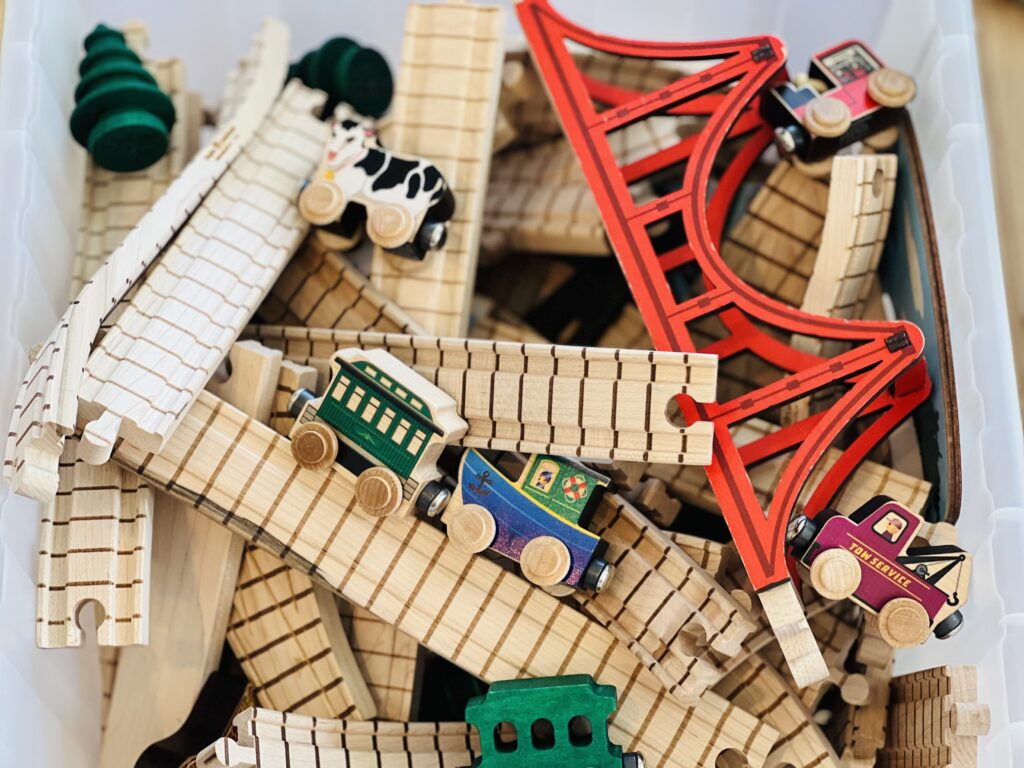
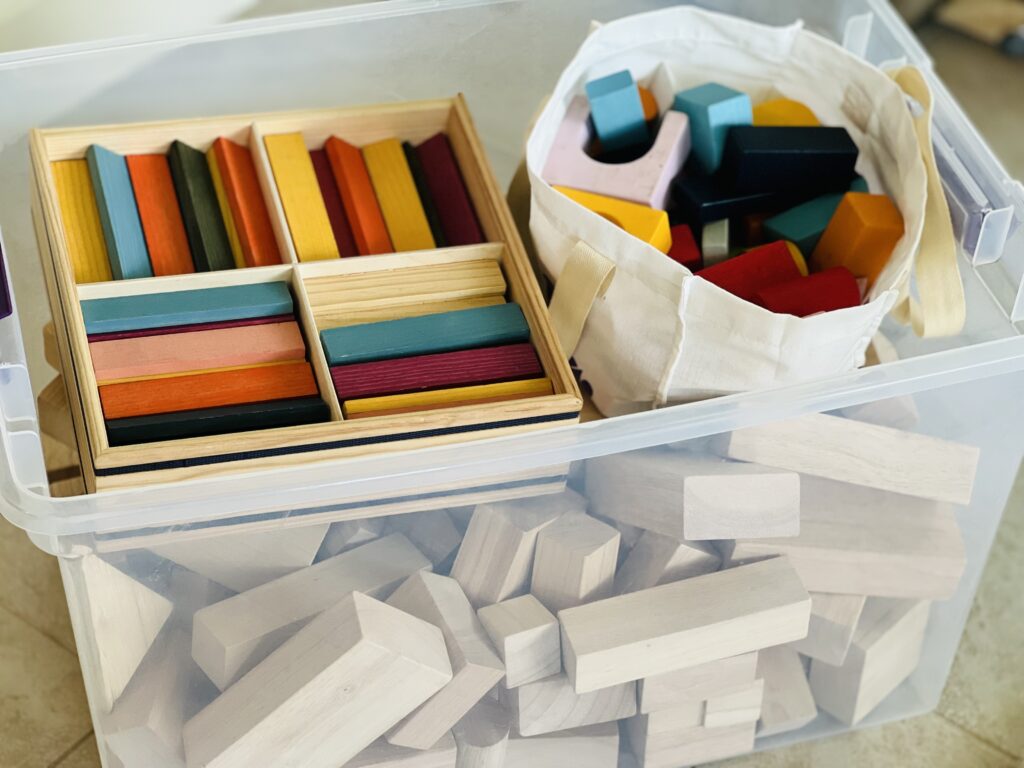
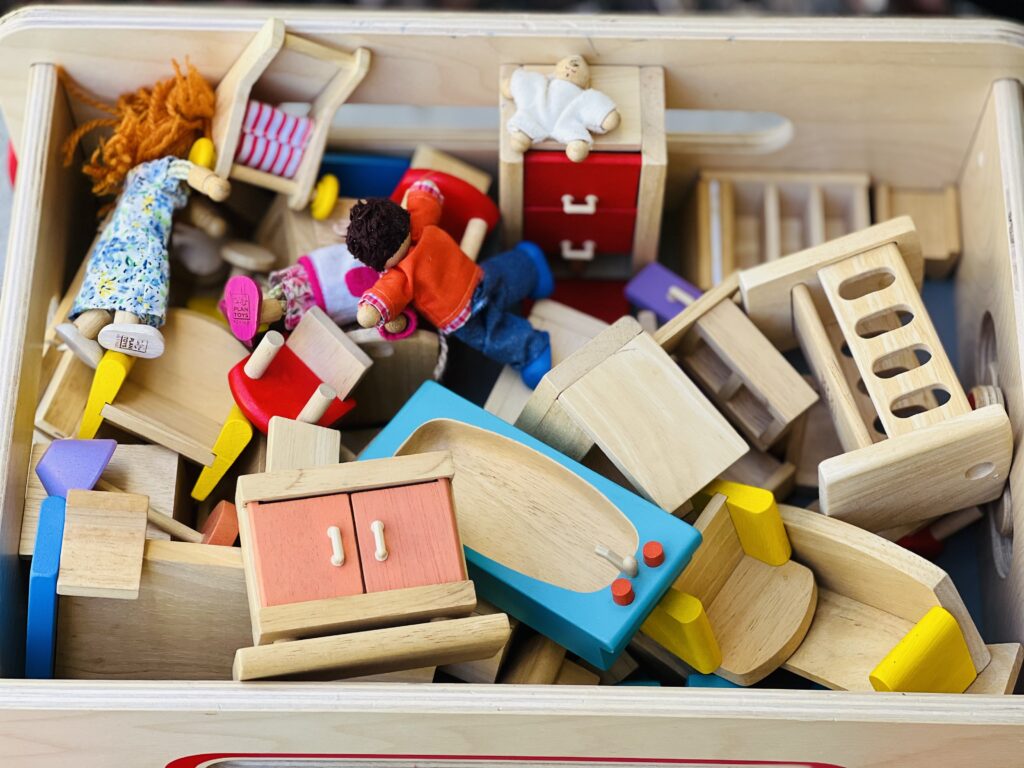
If you have only a baby or toddler, your categories will look different. It is based on your toy inventory. Baby/toddler toy category examples are as follows:
- 1. soft toys/balls
- 2. push toys/pull toys
- 3. fine motor skill toy
- 4. gross motor skill toy
- 5. pretend play
- 6. learning toy
- 7. blocks
- 8. animals
- 9. dolls
- 10. puzzles
Step 3:
Find small/medium boxes, bins, or canvas/cotton bags for each category for storage. Then place a tag or sticker labeling each box with the category.
- I like reusing canvas tote bags for the storage of toys and empty shipping boxes. There is no need to buy plastic bins for storage, as most of us have shoeboxes and totes already in the home. Cardboard boxes and canvas totes are more sustainable than plastic totes. I find reusable cotton produce bags great for small toy storage. Small bags are great for keeping playsets together with small pieces, which then can be placed into the appropriate category box.
- After labeling storage containers, sort all of your toys into these and leave one remaining item (or set) from each category to place in your family’s play area. During this process, you will see what toys need to be donated and if you have too many items in one category. This approach to storing and categorizing toys helps families to keep in check what they have too much of or maybe what they need more of. This approach helps you to curate a well-rounded toy collection for your child/children.
When you have a system in place with each category having an amount limit helps to keep you from over-purchasing.
- For example, if I have only 1 medium box for the vehicles/transportation category then I would probably not buy too many large-sized trucks. *( As a side note, In my 17 years of parenting experience, the larger playsets and toys get played with less than the smaller toys. Parents sometimes think that buying “big” items will have a big “wow” factor with their children.
- Over the years, with my 5 kids, I have seen the opposite with toys. Kids are small people and tend to like more small items that are easy to manipulate and are tangible for them. Also, large playsets, such as big dollhouses, fire stations, barns, and kitchens take up too much space for their “play value.” Smaller versions are sometimes more fun for kids and are more easily storable. I prefer take-along-style wooden dollhouses, castles, and barns, etc. Kids also love smaller wooden kitchens in which they can play sitting down. In my opinion, there is no need for the overpriced and oversized play kitchen.
- Having a toy rotation system in place will help you to conquer the clutter and keep clean up in your play area manageable. When you complete these steps, it will look like you don’t have a lot of toys in your family’s playspace. I promise your child/children will do more with less. The beauty of creating this system is you can adjust categories or change amounts of toys to best suit your family. I assure you that choosing a “toy rotation system” in your home will help you contain the clutter and play area messes and keep the boredom at bay. You will see lasting benefits in your child/children when they find contentment in playing with fewer toys.
Conclusion: Toy rotation provides a few nice benefits
- Your child/children will be more creative with what they have out.
- Your child/children will play more intently and for longer periods of time with individual toys.
- The home play area will be easier to clean up at the end of the day with fewer toys out.
- You create a more intentional play space with toys brought out in categories.
- Toys will be played in a more open-ended way because there is less.
- Your home will be less chaotic and more peaceful.
To hear more about Toy Minimalism and Toy Rotations check out a Podcast I was recently on HERE.

